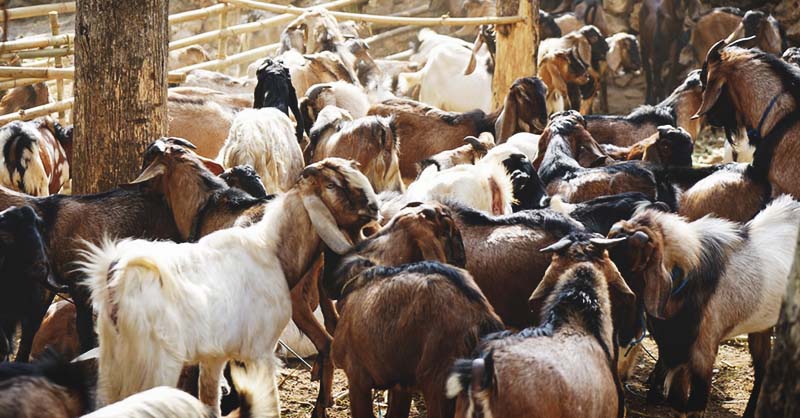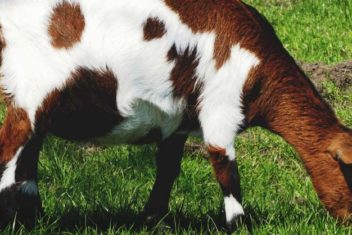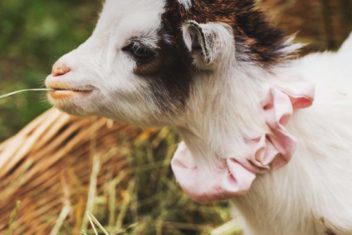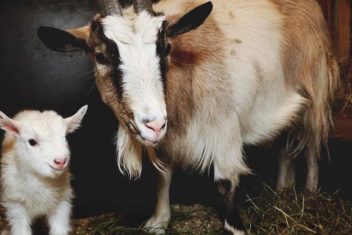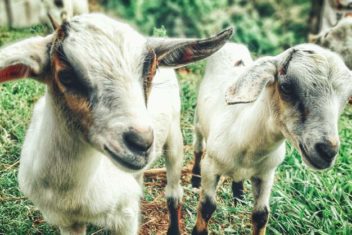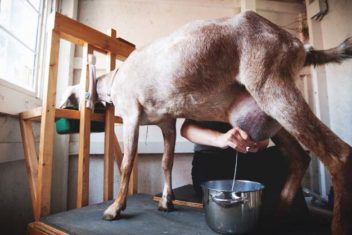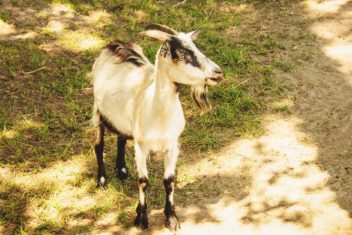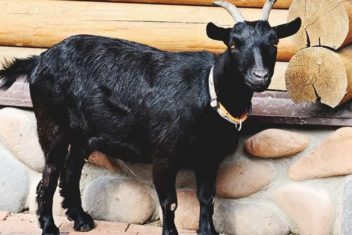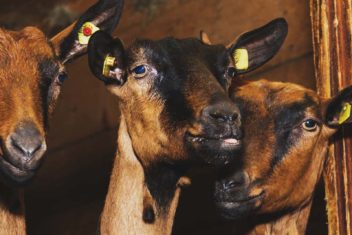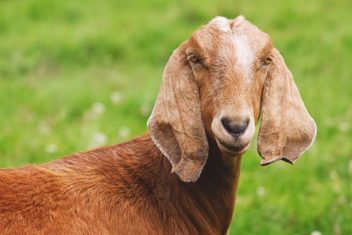Goats are herd animals by nature.
I remember when I first read that statement on some blog, or in a book, many years ago. It seemed like such a quaint, charming idea. I envisioned goats living harmoniously together and cooperating to enhance their collective well-being. However, the reality of a goat herd is very different than I imagined.
A goat herd is not built on harmony but on exclusivity and hierarchical competition. Within a herd, there are often factions as well. So, even though there is central leadership such as the herd queen or head buck, there are also some pretty complicated dynamics at play in the lower ranks.
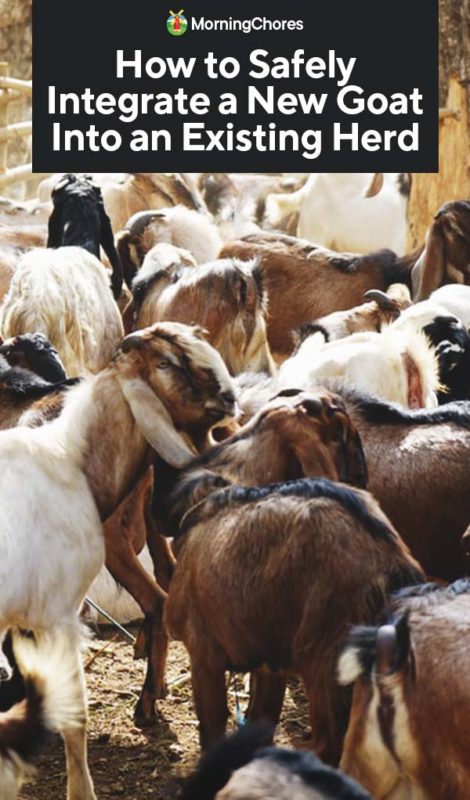
How to Introduce a New Goat into a Herd
The less than idyllic nature of herd dynamics makes bringing home a new goat to join an existing herd a bit of a risky prospect. But there are some things you can do to help the integration process happen with less stress for you and your herd.
Here are some of the things I’ve learned that I hope will help you through the process too.
Understand Herd Mentality
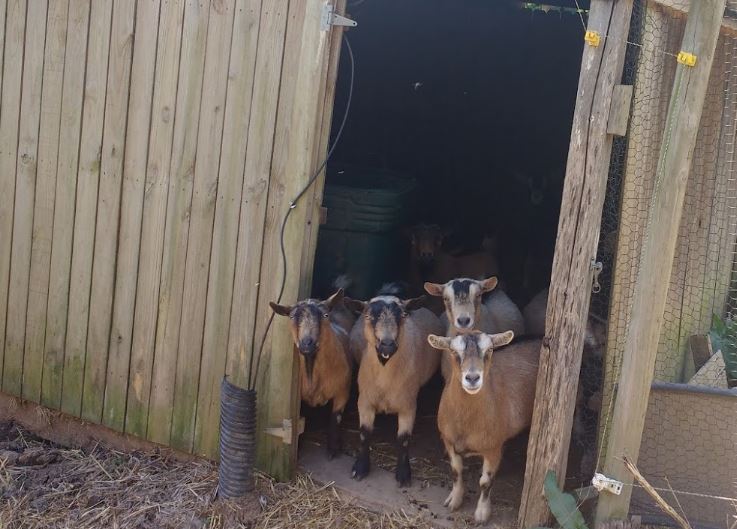
When you introduce a new goat into an existing herd, you should expect several days (or longer) of fighting to establish the new goat’s position within the herd. Goats aren’t necessarily opposed to new members as long as those new members are likely to make the herd stronger. But herds are reluctant to welcome new members perceived as weak.
If your new goat is strong and will ultimately take a position a bit higher up in herd order, the fighting tends to wrap up fairly quickly. Unfortunately, if your new goat is considered a weakling, the fighting can go on for much longer.
It seems cruel, but goat herds exist for goat safety (not harmony as I once thought). So discouraging members who might slow down the herd or not be an asset in the event of a predator attack is normal goat behavior.
Goats, even on our comfortable homesteads, are still hard-wired to think in terms of herd protection. Sometimes new goats just came from small herds and aren’t skilled at fighting. In that case, after a long initiation period to make them stronger, they are welcomed.
Sometimes, though, a goat is just not as hardy as the rest of the herd. In that case, if you have enough space, those goats will isolate themselves and survive on the perimeters of the herd. If you don’t have a lot of room to give them that space, then it can get ugly.
Quarantine Your New Goat
With that background in mind, the first thing you want to enforce when bringing home a new goat is a quarantine period. This not only protects your herd from potential disease transmission but also gives you time to make sure your new goat is in great condition before you put them through the gauntlet of joining the goat herd.
Even if you buy healthy goats from reputable breeders, you’ll want to isolate your new goat for a period of time to ascertain if any health risks exist. The length of the quarantine depends on the condition of your goat and the timeliness and results of any virus or parasite testing you do.
1. CAEV Testing
For example, if you bought a goat that had recently been tested for CAEV with negative results, then your main quarantine concerns might be parasite-related. However, if you need to perform the CAEV test, your quarantine might be longer.
2. Parasite Testing and Treatments
If you perform tests for parasites, then you may just need to quarantine for a short period of time so you can do a fecal exam, or have one performed by a veterinarian. If the goat is in good health, treatment may not be necessary and your quarantine may not have to be as long.
If you automatically treat for parasites rather than testing, or if the goat requires parasite treatment, then your quarantine might last through two cycles of de-wormer or coccidiosis treatment (for young goats).
3. Observation
Quarantine also gives you a chance to closely observe your new goat’s health and behavior. As a goat keeper, there are a lot of clues you can pick up just by giving yourself time to know your new goat and determine what’s normal for them.
You’ll get a sense of your goat’s fitness and be able to address any deficiencies before they meet the rest of the herd.
4. Food Transition
Unless your new goat was eating exactly the same diet as your current herd, there’s also a transition period on supplemental feed. Changing locations is already stressful enough, but completely changing a goat’s diet can actually create health problems and make new goats more susceptible to parasite overload.
By using the quarantine time to slowly transition goats from the same feed and supplements they were on at their old home, to the feed and supplements you use, you can help ensure their continued health and the health of your herd.
5. Quarantine Length
The big question though is, how long does a goat have to be quarantined? There is no perfect answer. But, the most common quarantine period seems to be about 30 days.
Though, some goat owners will quarantine as long as 90 days. You’ll need to make that decision for yourself based on the facilities you have available and the condition of your new goat.
6. Quarantine Company
Some goat keepers have an extra wether or two in their herd to use as company for new goats while they are quarantined. Those wethers will, of course, be at risk for catching anything your new goat has. But, if you are bringing in a prized dairy goat that you just spent a fortune on, giving them company during quarantine may help maintain their health during their transition.
Timing
Timing is also important for a successful goat integration. The right time can vary depending on the sex and reproductive status of your goats.
1. Does and Doelings
When does are getting ready to kid, when they’ve recently kidded, or when they are in estrus, they tend to be a bit more…shall we say… sensitive. If you are trying to integrate a new doe or doeling goat when your existing herd hormones are in havoc, that might exacerbate an already tricky situation.
I find it much easier to integrate new female goats into my herd after kids are weaned and before fall when estrus cycles become more intense. If you can’t make this window, then aim for times when your herd queen and other lesser leaders are not experiencing any hormonal changes that make them more persnickety than usual.
2. Bucks
If you are bringing home a new buck to replace your old one, and your old buck is out of the picture, introductions are easy. Just bring in the buck when one or more of your does is in the mood and they’ll be a welcome addition.
If you are bringing home a buck to accompany your existing buck, then make those introductions separate from the ladies. Put the bucks together in a place far away from your does and leave them there until they agree on a winner.
3. Wethers
Wethers are a bit confusing to both bucks and does. Their reproductive herd mates don’t quite know what wethers are without their sexual organs to identify them. So, integrating wethers usually doesn’t require any special timing. But, it’s probably best to try for the off-season if possible as a precaution.
A Few More Integration Tips
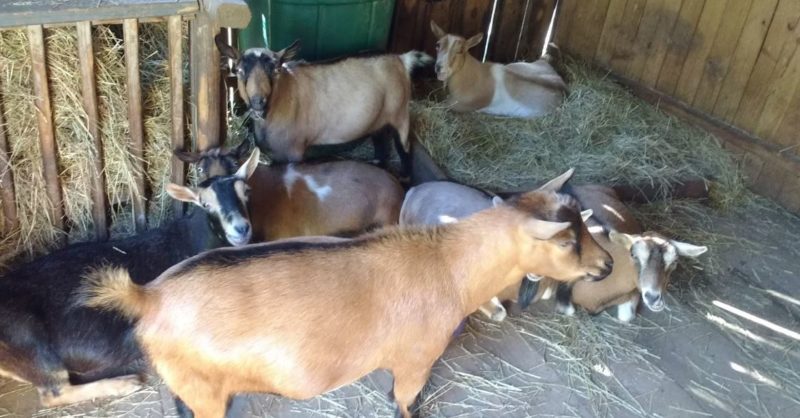
Now, with the herd mentality, quarantine, and timing issues covered, there are some simple things you can do to expedite a successful integration.
1. Silver and Gold
Do you remember this scout song?
Make new friends, but keep the old.
One is silver, the other is gold.
Well, this is also good advice when it comes to integrating your new goat into your old herd. Treat your old girls like gold and your newbies like silver. Yes, in the end, they’ll all be your golden goats.
But, your old goats will be more accepting of a new goat if they think you like them better than your newbie. You’ve spent plenty of time bonding with your new goat during quarantine, so now it’s time to let your goats bond with him or her as quickly as possible.
2. Horn Policies
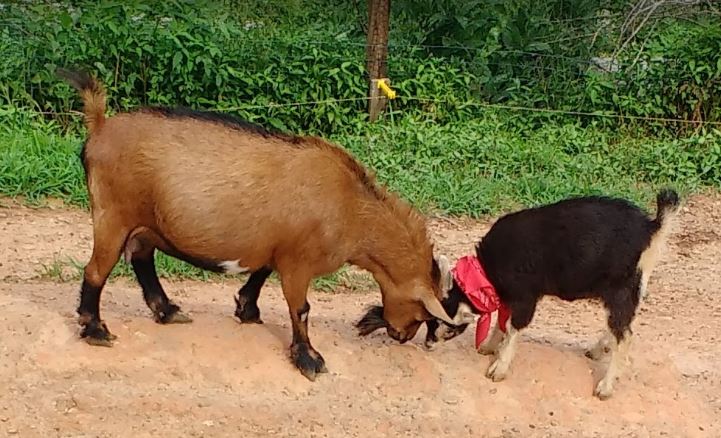
Personally, I find it easier to have a herd that is either all horns or all disbudded and polled. If all of your goats are equally equipped to do battle then the battles are fairer.
When you bring a horned goat into a herd with hornless goats, that horned goat is, as the expression goes, like bringing a knife to a fist fight. But if you bring a goat with no horns to a horned herd, it’s potentially a whole lot worse.
If you are mixing horned with non-horned goats, then you may want to take precautions such as putting foam pool noodles over goat horns to blunt the blows. Some owners also file the tips of their goat horns to reduce risk.
3. Individual Introductions
Your herd will take their cues from your herd leaders on how relentless to be in their testing of a new goat. So, if you want a preview of what your new goat will be up against, start by introducing them to your herd leaders individually.
That initial introduction won’t change the outcome, but at least you’ll know if you have more work to do to get your new goat in condition for the ensuing battles. Also, you’ll know whether to plan extra supervision for whole herd introductions.
4. Selective Supervision
On the subject of supervision, I try not to intervene much during introductions. But, I do free up a few hours to watch herd dynamics during the initial meeting to make sure there’s no immediate jeopardy to my new goat.
If after a few hours my new goat hasn’t been allowed a chance to eat or drink by their herd mates, I’ll give them a little private time to eat, drink, and relax before putting them back out with the herd.
5. Offer a Take-a-Break Room
If you make introductions on open pasture with lots of room, new goats can get away and take breaks from taking beatings when needed. If you have limited pasture area or are making introductions inside goat barns, then you may want to offer a semi-private space for your new goat to retreat to.
“Out of sight, out of mind” is the key for small spaces. If your new goat can “disappear” into a dark corner or around a stall divider, the herd will lose interest for a bit and let them recover.
Personally, I have a fairly big pasture for initial introductions, then I allow goats access to two rooms in my goat barn during integration periods. My herd queen always takes the front room, so new goats can make themselves scarce in the backroom to get a rest.
6. Abundant Atmosphere
During introductions, you may want to offer your entire herd endless access to hay and more frequent treats. This offers a distraction from the fighting.
Plus, when your goats feel a sense of abundance, they are more likely to welcome a new member. If they feel deprived or are limited to non-preferred weeds in pasture, they are more likely to extend their torment to discourage new additions.
Now, even when you give your goats plenty of food during the transition, they’ll still be competitive eaters and will not be likely to share with new members. So, you may still have to feed your newbie separately to make sure they stay strong.
How to Integrate a New Goat Conclusion
The truth is, goats tend to work it out even without all this preparation and intervention from us. Only a very small percentage of new goat introductions result in severe injury and even fewer end in death. But, even when the risks are low, none of us want to see those outcomes.
So, with some basic precautions, a few easy tricks, and making sure the goats you bring home are top quality in the first place, you can safely add new herd members with much less stress for you and your silver and gold goats.

